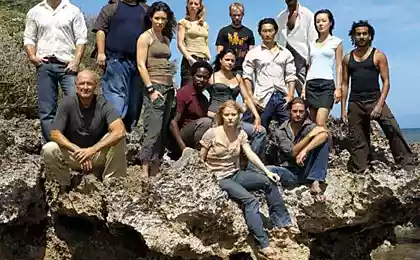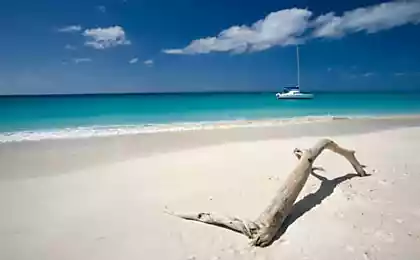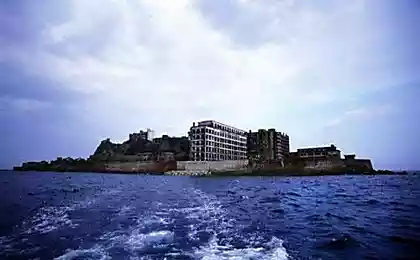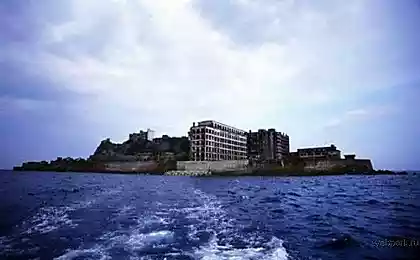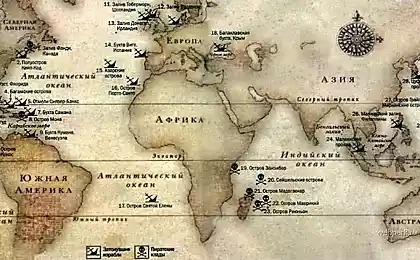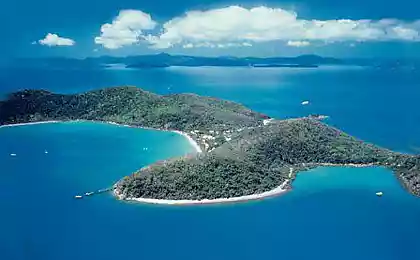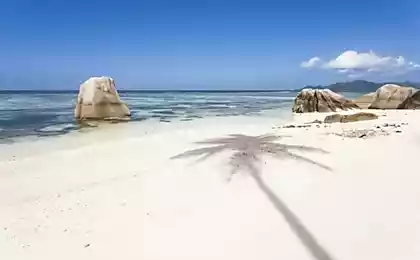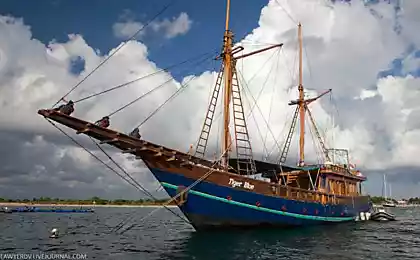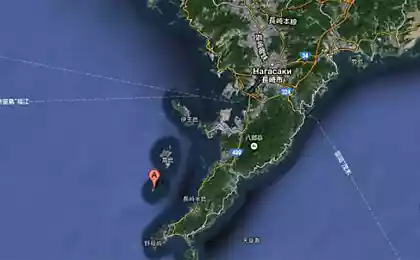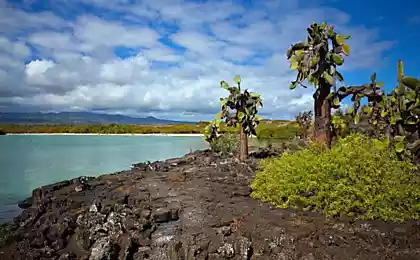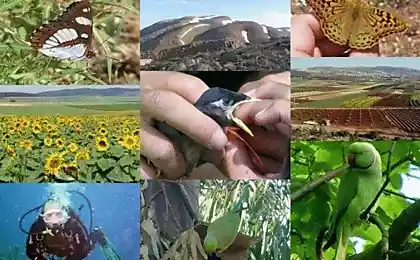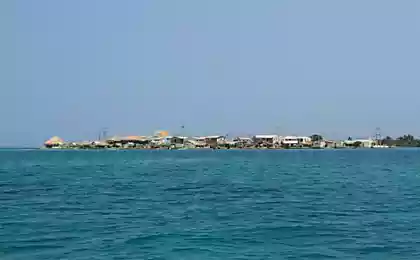447
11 beautiful islands with amazing biodiversity
The islands of the Earth boast the most diverse collection of plants and animals. Due to the unique combination of conditions and factors of influence, the evolution of island life differs significantly from the paths of development on continents.
This year’s International Day for Biodiversity (22 May) highlighted the importance of preserving the flora and fauna of the Earth’s islands. This topic concerns not only endemic species and endangered habitats, but also how the nature of the islands affects human settlements. The Convention on Biological Diversity hopes to draw the attention of the general public to such island ecosystems.
The 11 islands below represent biodiversity. Few other land areas of the Earth can compare with them in terms of the originality of plant and animal species.
borneo The area of the third largest island in the world Borneo is more than 743 thousand square kilometers. It is divided between Malaysia, Indonesia and the small sultanate of Brunei, and the island is home to 200 species of mammals, 44 of which are endemic (meaning they are not found anywhere else in the world). In addition, about 6 thousand plant species are endemic in Borneo. The most striking biodiversity statistics come from the dipterocarp trees in the island’s rainforests, with over 1,000 species of insects found in a single tree.
sumatra The area of the island in western Indonesia is more than 473 thousand square kilometers. Despite a population of more than 50 million, Sumatra boasts a staggering diversity of wildlife. The jungle inside the island is home to a rare combination of species. It is the only place on Earth where tigers, rhinos, elephants and orangutans live in the same wild ecosystem. Large-scale conservation measures have been taken to protect these species, in particular the Sumatran tigers, which are estimated to have fewer than 400 left.
madagascar The state of Madagascar in the Indian Ocean is located on the fourth largest island in the world, which is the brightest personification of biodiversity among all places on the planet. Incredibly, nearly 90 percent of flora species are endemic. On some mountain peaks of the island you can find unique plants. Of course, the most famous animals unique to Madagascar are lemurs, and the island is home to 72 types of these primates.
New Zealand New Zealand consists of two land areas – the North and South Islands. The variety of landscapes of this state is especially known from Peter Jackson’s film trilogy The Lord of the Rings. Every ecosystem in New Zealand is filled with endemic species. All native bats, reptiles and amphibians can be found only here, and about 90 percent of freshwater fish are endemic. A great example of the incredible nature of New Zealand is the mushroom population, which according to estimates is about 20,000 species, but less than a third are classified.
tasmania The island of Tasmania, located south of continental Australia, is one of the most important centers of biodiversity in this country. The most famous island inhabitant is the Tasmanian devil, which is believed to be the only marsupial predator to survive on the planet. Among the local plants should be noted pine Huon, which grows extremely slowly, but can live up to 3 thousand years. The humid climate of Tasmania is dominated by the endemic pandanus plant, similar to a prehistoric palm tree. In the diverse population of animals of the island you can see platypus, penguins, parrots and the rarest speckled marsupial martens.
palau The tiny state of Palau in Micronesia is only 458 square kilometers, but its wildlife is unusually rich both on land and in water. The coastal areas of Palau are very saturated with marine species such as crustaceans and corals. In the shallow waters of the island you can see many unusual relatives of stingrays called dugong. It should be noted the large variety of freshwater fish of the island, which has four endemic species. Among the unique creatures of Palau are jellyfish without stinging cells. These creatures, drifting in local salt lakes that are connected to the sea only by tunnels and underwater caves, have lost the ability to sting due to the lack of natural predators.
coiba Coiba off the Pacific coast of Panama is a major Central American island. Here, without contact with humans, a number of animal species evolved. Coib's most famous endemic creation is the howler monkey. The local wildlife is booming for a very unusual reason: until 2004, the island operated the infamous Panamanian prison. Because there were very few civilians, and more than 75 percent of the territory is still covered with virgin forests. Coiba is one of the largest coral reefs on the entire Pacific coast, and more than 700 species of fish have been documented in marine habitats.
South Georgia The Antarctic Islands are the last place you expect to see rich ecosystems. But targeted research on the remote island of South Georgia has revealed the same biodiversity as the famous Galapagos Islands. So, in the coastal waters of the island live many marine species. Here you can find such amazing creatures as free-floating seaworms, white-blooded fish and sea spiders. The coast of South Georgia is dominated by a huge population of penguins, while 90% of the world’s seals, along with half of the elephant seal population, use the island as a base. In total, the cold waters and icy land of the island of South Georgia are called the home of 1,500 species.
galapagos These famous islands of Ecuador lie on both sides of the equator in the Pacific Ocean. Charles Darwin visited them in the 1830s, returning with solid evidence of his evolutionary theories. Many of the animals that inspired his discovery still feel great in their home. Galapagos land iguanas, unique sea iguanas that hunt in the water, elephant turtles, flightless cormorants and a huge number of endemic finches (collectively called Darwin finches) call this place their home. On one small stretch of coastline you can easily see several striking views.
Cuba Cuba’s political and economic isolation means that little is known about the island’s wildlife. However, in the unique combination of the ecosystems of this place, a number of species thrive. An excellent example of Cuba’s biodiversity is the Zapata swamp. It is the wettest wetland region in the Caribbean, home to the Cuban crocodile. In addition to this endemic predatory reptile in the swamps you can see many colorful flamingos, several endemic species of birds, as well as hundreds of unique plants and insects. Cuba’s overall geographic diversity – wetlands, inland savannahs, mountains, arid coastal regions, and tropical rainforests – has given rise to unique ecosystems, each filled with endemic creatures.
Channel Islands The California Channel archipelago, located near the city of Santa Barbara, consists of eight islands. Five of these land areas, as well as the waters between them, are part of the national park. On the largest of them, the island of Santa Cruz can be found endemic bird species, such as the blue shrub jay. Bats, as well as unique species of foxes and mice, are among the terrestrial inhabitants of the reserve, although most of the biodiversity can be found in the waters between the islands, which will separate seals, sea lions, whales and dolphins. These marine mammals come here to breed and find food, attracting the attention of many nature lovers.
Source: facepla.net
The number infected with the coronavirus in Saudi Arabia has increased dramatically
Folk methods of combating phytofluorosis tomato
